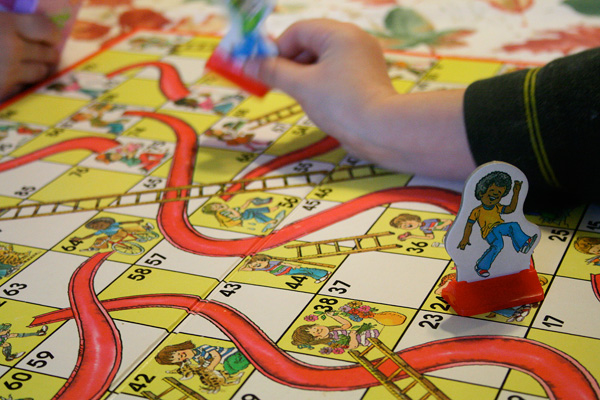
Photo: Ben Hussmann/CC by 2.0
This city has chutes and ladders, but most people don't really go up or down either one.
Today the New York Times has a fascinating piece on a massive new study about intergenerational economic mobility in America, one that "that other researchers are calling the most detailed portrait yet of income mobility in the United States," according to David Leonhardt.
And it's sufficiently detailed to compare metropolitan regions, the focus of the study: the odds, depending on where you live, that children of low-income parents will rise to the highest quintile of income, vice versa, and anywhere in between.
Chicago does not come off well. Of the top 30 metro regions in the country, the odds that a child born into the bottom fifth quintile (parents' income of less than $25k) will move to the top fifth quintile are six percent, 25th out of 30. Only St. Louis, Cincinnati, Cleveland, Detroit, and Atlanta rank below Chicago.
The odds that a child raised in the top fifth will remain there, in Chicago, are 35 percent—good for 13th out of those same 30 metros. In other words, it's much easier to maintain wealth than it is to build it from scratch, and in Chicago it's especially hard. Of 10 largest metros in America, Chicago is the second-hardest for the bottom fifth to rise to the top fifth.
But that only covers the extremes: the odds of the very poor rising to the ranks of the very well off, and the odds of the very well off staying that way. The patterns there are apparent but not very surprising. So I was curious what happens to the rest of Chicagoans, and what happens if your sights aren't set quite that high: moving from very poor to middle class, for instance, or middle-class to wealthy.
And a very interesting pattern emerges. If you're raised poor or lower-middle-class in Chicago (first and second quintiles), you're more likely to slide down the ladder than rise up it. If you're upper-middle-class or rich (fourth and fifth quintiles), you're more likely to climb it further than slide down. And if you're exactly middle class, the third quintile, it's a bell curve.
* The most likely scenario across all income levels is basically a tie between the rich staying rich (35 percent) and the poor staying poor (34 percent).
* The least likely scenario is a poor child becoming a rich adult (six percent). The second-least likely scenario is a poor child becoming an upper-middle-class adult (11 percent).
* That's followed by a lower-middle-class child becoming a rich adult (12 percent) or a rich child becoming a poor or lower-middle-class adult (13 percent).
* The middle class are more likely to become poor than rich (19 percent versus 18 percent) but more likely than either to become lower-middle class, stay middle class, or move to the upper-middle class (21, 21, and 20 percent).
Details: For the purposes of the study, parents' income is the mean family income from 1996-2000. Child earnings are the mean family income for the 1980-85 birth cohort, taken in 2010-2011: in other words, 30-year-olds. "Rich," it should be noted, is relative: the 80th percentile begins at $107,500 for parents, $99,600 for children. All the data's here.



